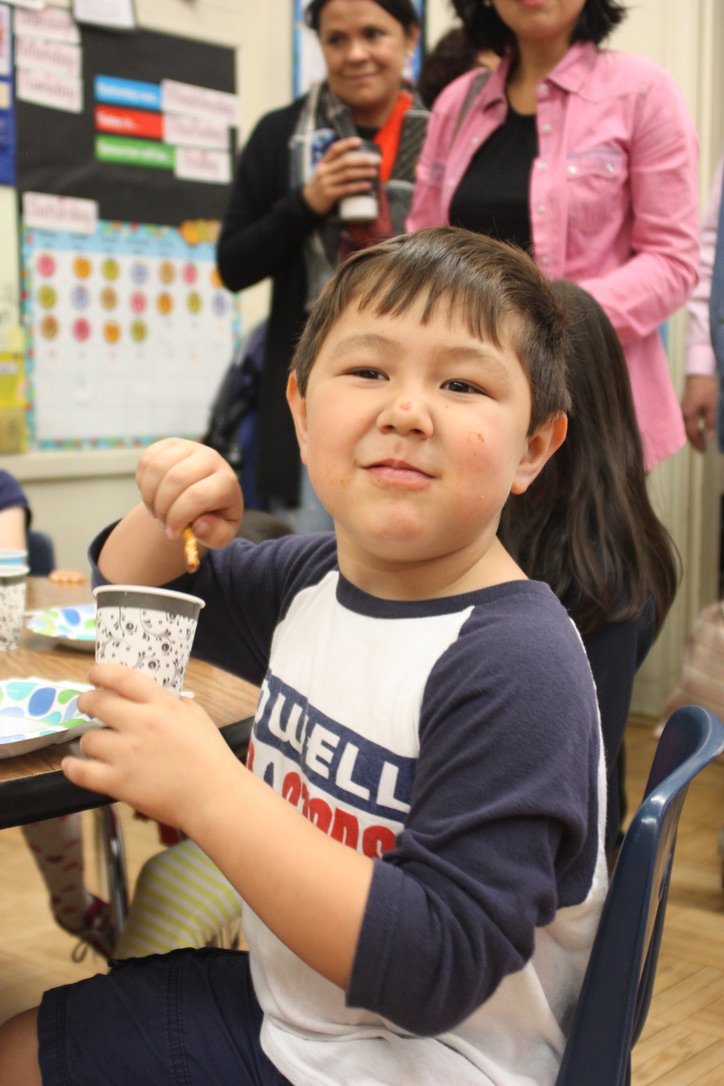Whole Human Beings Empowering Learning
Back-to-School Preparation for Parents and Teachers
The school year has begun! “Welcome back to school!” can feel like a statement of excitement for some, for others it feels like a shouting out of anxiety and overwhelm. As Ana Maria is preparing to head back to UC San Diego, Maria and Stanley preparing for travel to Detroit at Wayne State University for a teaching residency, and many of you are back in the classroom whether as a student or a teacher. As summer winds down, parents and teachers are shifting gears toward back-to-school preparation. Beyond the usual checklists of supplies and classroom arrangements, there's a deeper question we must address: What do students need from us to do their best work, not just as learners but as human beings? How are whole human beings empowering their own learning as students? How can we be optimistic about going back to school without being toxically idealistic? How can we help cultivate the next generation of artists, activists, and changemakers?
Recognizing Students as Whole Human Beings
Education is not just about academic performance; it's about nurturing the whole child. Parents and educators create an environment that supports students' emotional, social, and physical well-being alongside their intellectual growth. This approach — known as holistic education — ensures that students are not just successful in their studies but also in life. Holistic education is one that attends to the physical, emotional, social, spiritual, creative, intellectual, and humanistic integration of these experiences into teaching methods and curriculum. The conditions and lived experiences of human beings influence and inform pedagogies, practices, and processes that are offered within the learning community.
Understanding the Needs of Today's Students
“Back to school can be just as stressful and exciting for parents and teachers as it is for kids”
Today's students are navigating a complex world, where academic pressure is compounded by social challenges and, for many, the lingering effects of the COVID-19 pandemic. It can not be emphasized enough that the impacts of the pandemic on our students has been deep, painful, long lasting, and is no way their fault. The slide back in academic growth, the increase in social-emotional dysregulation, the over and underwhelm, and slower learning leading to self actualizing is just real. Our bodies, our psyches, our communities have not healed from the COVID-19 pandemic and the endemics of patriarchy and white supremacy. To help students thrive, we need to focus on several key areas:
Mental and Emotional Well-Being
Students are facing unprecedented levels of stress and anxiety. It's crucial to provide them with resources to manage their mental health, such as counseling services, mindfulness programs, and open lines of communication with trusted adults. We can all learn to be more aware of our own biases and privilege, and to create inclusive and equitable learning environments for all students.
Social Connection and Belonging
A sense of belonging is fundamental to student success. Schools and families should prioritize building inclusive environments where every student feels valued and connected. Focusing on fostering a culture of trust includes transparency and honesty. This can be achieved through community-building activities, conflict resolution through the lens of transformative justice, anti-bullying initiatives, and relationship-fostering activities between students, teachers, and parents.
Physical Health
Physical well-being is closely linked to academic performance. Encouraging regular physical activity, providing nutritious meals, and ensuring that students get enough sleep are all essential to helping them stay focused and energized throughout the school day.
Cultural Relevance and Inclusion
Students come from diverse backgrounds, so it's important that their cultures are respected and represented in their educational experience. Cultural relevance and inclusion include power building in our students. Culturally responsive teaching practices, a curriculum that reflects students' lives, and opportunities to celebrate diversity in the classroom are ways to ensure that all students feel seen and heard. Giving students autonomy and the space to make their own decisions and solve their own problems yields adults who become active citizens and advocates for their own rights and the rights of others.
The Role of Parents and Teachers in Student Success
Both parents and teachers play vital roles in supporting students, but collaboration between the two is key to addressing students' needs holistically. Back to school can be just as stressful and exciting for parents and teachers as it is for kids - we are all returning to school! When we educate individuals, we educate all of us as a people. When parents dedicate themselves to caring for our young learners, we are caring holistically for all of us as a collective society growing our shared knowledge as a human resource that is renewable and sustaining.
For Parents:
Stay engaged AND know when to butt out: Remember that thing called trust? Regular communication with teachers helps parents stay informed about their child's progress and challenges. It can also be helpful to know when to simply trust the learning process with a child, rather than apply more pressure on the kids' school work. We are already witnessing their daily trials and errors of trying out variations of who they might want to be. Sometimes parents take the role of director, sometimes the role of stage crew, and sometimes parents take the role of audience members who are invited to take in this comedy-drama family, to cry and laugh at how beautiful, and absurd, it is to try to be a person in the world.
Create a supportive home environment: A quiet place for homework, healthy meals, and a routine that includes adequate sleep and physical activity all contribute to a child's ability to succeed academically and emotionally. Unfortunately, this type of “ideal” home environment is often a luxury that many of us do not have access to. Seeking this ideal can often increase stress and feelings of failure as parents, particularly those whose conditions do not allow for quiet spaces, healthy food, and proper sleep. So how can we create supportive homes if we do not have access? For homes to be supportive for our children, we as parents also need supportive resources. Sometimes it means taking advantage of community programs, and sometimes that simply means asking a friend for help.
Encourage open dialogue: Open communication fosters trust and provides an opportunity to address issues before they escalate. The default to initiating this dialogue, “how was school today?” is usually met with the one word “fine,” and subsequent silence. Establishing regular, one-on-one time to talk about their day, feelings, and interests, can help facilitate relationship. By listening actively, without judgment, validating their emotions and experiences, and showing empathy, trust can be established, and children may become more willing to share with their parents. Be honest and open about your own feelings, too. Encourage them to ask questions and express themselves freely. Remember, building trust takes time, so be patient and consistent in your efforts.
For Teachers:
Foster a positive classroom environment: Create a space where students feel safe to express themselves and take risks in their learning. This can be achieved through positive reinforcement, clear expectations, and a focus on social-emotional learning.
Differentiate instruction: Recognize that students learn in different ways and at different paces. Tailoring instruction to meet individual needs helps ensure that every student can succeed.
Collaborate with parents: Teachers should maintain regular communication with parents, sharing both successes and areas for growth. This partnership is crucial in providing consistent support for students.
CONTRA-TIEMPO: Building Community and Empowering Youth
Here at CONTRA-TIEMPO, we understand the importance of addressing the holistic needs of young people in our community. We are a Los Angeles-based dance company that goes beyond performance to engage community members through programs that empower youths to express themselves and connect with others.
Our community engagement and youth programs are designed to help young people build confidence, develop leadership skills, and foster a sense of belonging. Through dance, students are encouraged to explore their identities and tell their own stories while also connecting with broader social issues.
In our work with schools and community groups, we provide a model for how the arts can be integrated into education to support the whole child. By offering a space for creative expression and dialogue, we help students develop the skills and resilience needed to thrive both in and out of the classroom.
As parents, teachers, and students everywhere prepare for the upcoming school year, let's remember that our goal is not just to help students achieve academically but to support them as whole human beings. By addressing their mental, emotional, physical, and social needs, we can create an environment where students are equipped to do their best work.
Whether you're a parent, teacher, student, or community member, consider how you can contribute to this holistic approach to education. Together, we can ensure that every student feels valued, supported, and ready to take on the challenges of the new school year.
At CONTRA-TIEMPO, we create communities where all people are awakened to a sense of themselves as artists and social change agents who move through the world with compassion and confidence. Our physically intense and politically astute performance work moves audiences to imagine what’s possible. We wield the power of art to influence social change, live out our values, and teach others to engage in art activism. Support our movement by donating today.
Bibliography
What is Holistic Education? Understanding the Benefits | American University. (2022, October 29). School of Education Online. https://soeonline.american.edu/blog/what-is-holistic-education/
Will, M., & Najarro, I. (2022, April 18). What is culturally responsive teaching? Education Week. https://www.edweek.org/teaching-learning/culturally-responsive-teaching-culturally-responsive-pedagogy/2022/04







